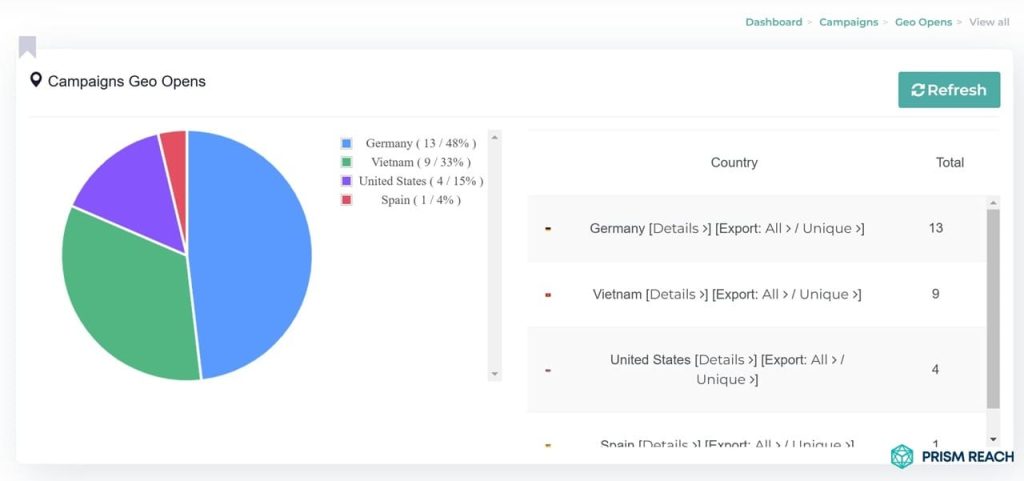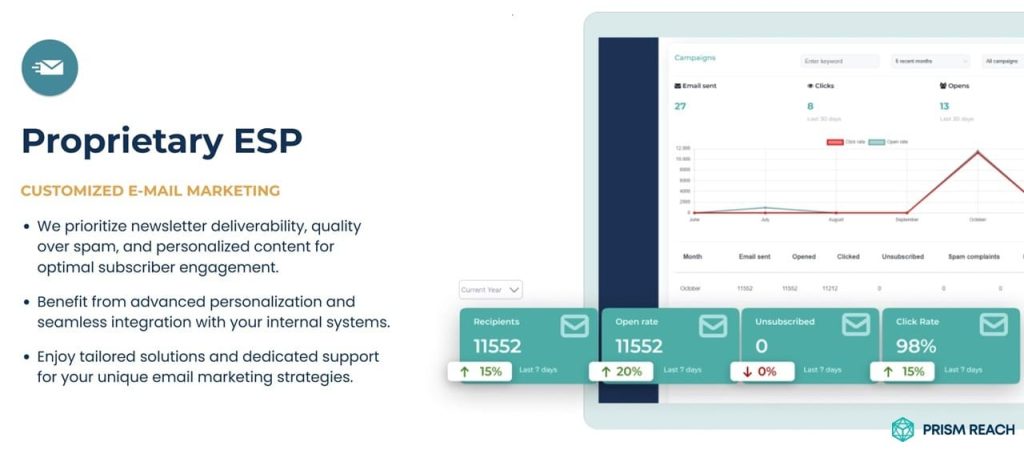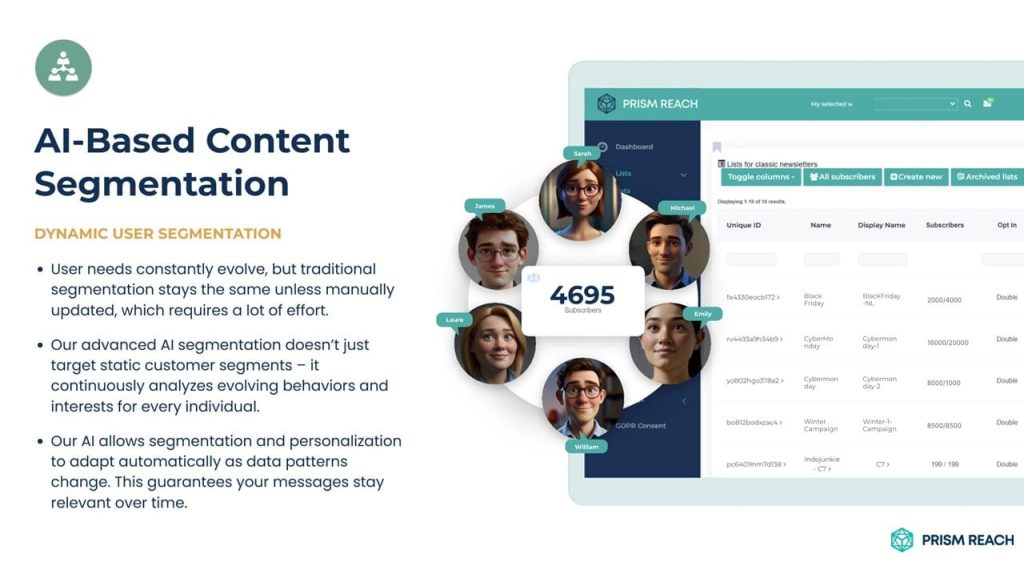In the ever-evolving landscape of digital marketing, email campaigns remain a cornerstone of effective customer engagement. However, the success of these campaigns hinges not just on content, but critically on timing. As inboxes become increasingly crowded, the question of when to send emails has never been more pertinent.
Key Facts
- The best time to send email campaigns varies by industry and audience, but generally, early mornings (8-10 AM) and late afternoons (3-4 PM) show higher engagement rates.
- Tuesday and Thursday are often cited as the most effective days for email sends, with open rates up to 18% higher than other weekdays.
- Personalized send times based on individual subscriber behavior can increase open rates by up to 40%, highlighting the importance of AI-driven timing optimization.
Upgrade Your Email Marketing with AI Personalization!
Decoding the Optimal Email Send Times
The quest for the perfect email send time has long been a subject of debate among marketers. Our research indicates that while general trends exist, the most effective approach is nuanced and data-driven.
“The idea of a universal ‘best time’ to send emails is outdated,” says Dr. Emily Chen, digital marketing analyst at TechTrends Research. “Today’s successful email strategies leverage AI and machine learning to pinpoint personalized send times for each subscriber.”
Early Morning Advantage
Early morning sends, particularly between 8 AM and 10 AM, consistently show strong performance across industries. This timing capitalizes on the habit of many professionals checking their emails at the start of the workday. However, the effectiveness of this window can vary significantly based on factors such as industry, target audience, and geographical location.
For instance, B2B marketers often find this time slot particularly effective as it aligns with the typical start of the business day. However, it’s crucial to consider time zone differences when dealing with a geographically diverse audience. Some companies have found success by staggering their sends to hit this sweet spot across different time zones, ensuring that each segment of their audience receives the email during their optimal morning window.
Late Afternoon Surge
Interestingly, late afternoon sends, especially between 3 PM and 4 PM, have emerged as another high-performing time slot.
“We’ve observed a trend of increased engagement during the late afternoon hours,” notes Mark Thompson, Email Marketing Director at GlobalReach Solutions.
“It seems to catch people as they’re wrapping up their workday, often leading to higher click-through rates.”
This phenomenon could be attributed to several factors. As people begin to wind down their workday, they may be more inclined to check personal emails or engage with content that isn’t directly work-related. Additionally, this time slot might capture individuals during their commute home, particularly in regions where public transportation is common, providing a captive audience for email content.
Weekday vs. Weekend Performance
Weekday performance generally outshines weekends, with Tuesday and Thursday standing out as particularly effective days for email campaigns. However, this doesn’t mean weekends should be entirely discounted. Some marketers report success with weekend sends, attributing it to reduced inbox competition.
The effectiveness of weekend sends can vary greatly depending on the nature of your business and your audience’s habits. For instance, B2C companies targeting leisure activities or home improvement might find weekend sends particularly effective. It’s also worth noting that while open rates might be lower on weekends, click-through rates can sometimes be higher, as those who do open emails may have more time to engage with the content.

Advanced Strategies: Hidden Gems to Enhance Your Campaigns
Beyond the basics, several lesser-known strategies can significantly enhance the effectiveness of your email marketing campaigns. These hidden gems leverage technology and psychology to create more engaging and impactful emails.
Leverage Unconventional Sending Times
Experiment with sending emails at unconventional hours, such as 4 AM or 11 PM. These times can help your emails stand out in crowded inboxes, as fewer marketers typically send emails during these hours, potentially leading to higher open rates due to reduced competition.
Utilize Time Zone Segmentation
Segment your email list by time zones and schedule sends according to the local time of each recipient. This ensures that your emails arrive during optimal engagement windows, tailored to the specific habits of your audience.
Monitor Engagement Patterns Over Time
Regularly analyze engagement metrics over different days and times to identify unique patterns specific to your audience. This data-driven approach can reveal insights that generic statistics may overlook, allowing for more precise timing adjustments.
Analyze Competitor Send Times
Keep an eye on competitors’ email campaigns and their sending times. This analysis can help you identify gaps in their strategies that you can exploit by sending at different or less crowded times, increasing the likelihood of your emails being noticed.

Utilize Subscriber Preferences for Timing
Encourage subscribers to indicate their preferred email frequency and timing during sign-up or through surveys. Tailoring send times based on these preferences can lead to higher engagement rates as you respect their schedules and increase the relevance of your communications.
Revolutionize Your Email Marketing with Prism Reach
As we’ve explored the intricacies of email timing, it’s clear that personalization and data-driven strategies are key to success. This is where Prism Reach comes into play, offering a cutting-edge solution that takes email marketing to the next level.
Prism Reach’s sophisticated AI algorithms analyze vast amounts of data to create detailed user avatars, enabling you to craft newsletters that resonate on a personal level with each recipient. By leveraging this technology, you can expect to see significant improvements in engagement rates, potentially up to 40% higher than traditional methods.
Key Benefits of Prism Reach
- AI-Powered Send Time Optimization: Uses AI to determine the optimal send times based on subscriber behavior, ensuring your emails reach recipients when they’re most likely to engage.
- Time Zone Segmentation: Automatically segments and schedules emails based on subscriber time zones, eliminating the guesswork and ensuring timely delivery across different regions.
- Engagement Analytics: Provides detailed insights into engagement patterns, helping you understand when your audience is most active and responsive.
- Personalized User Avatars: Creates comprehensive profiles for each subscriber, allowing for highly tailored email content and send times.
- Dynamic Content Scheduling: Adjusts send times dynamically based on real-time data and changing subscriber behaviors, maintaining optimal engagement continuously.
With features like AI-generated send time suggestions, automated time zone segmentation, and comprehensive engagement analytics, Prism Reach offers a comprehensive toolkit for modern email marketers looking to maximize their campaign effectiveness.
Seamless Integration and User Experience
Prism Reach offers a seamless setup and integration process, allowing marketers to get started quickly and efficiently. Its user-friendly interface includes drag-and-drop editors, pre-designed templates, and AI-enhanced sign-up forms that increase sign-up rates and improve GDPR compliance.
Advanced Analytics and Reporting
The platform provides in-depth analytics and reporting features, enabling marketers to track key metrics such as open rates, click-through rates, and conversion rates. With tools like sentiment analysis and churn prediction, Prism Reach offers valuable insights to continuously optimize email campaigns.
Collaboration and Support
Prism Reach fosters team collaboration with features like role-based access controls and multi-language support. Additionally, its integrated customer support chat and comprehensive API documentation ensure that users have the resources they need to succeed.
Upgrade Your Email Marketing with AI Personalization!
FAQ
Benefits of Prism Reach
- Increased Engagement: Publishers report up to 40% higher engagement rates due to the personalized nature of the content. By tailoring send times to when each subscriber is most active, Prism Reach ensures that your emails are seen and interacted with more frequently.
- Higher Revenue: Tailored advertising and efficient content targeting lead to higher monetization rates for published newsletters. Prism Reach’s dynamic content selection ensures that each email contains the most relevant offers and information, driving better conversion rates.
- Improved Productivity: Automation and AI-driven insights significantly reduce the time required to create and manage campaigns. With features like automated workflow setup and AI-generated content suggestions, marketers can focus more on strategy and less on manual tasks.
- Enhanced Personalization: Prism Reach’s user avatars and detailed subscriber profiles allow for highly personalized email content, fostering stronger connections with your audience.
- Comprehensive Analytics: Detailed engagement analytics provide actionable insights, enabling continuous optimization of email strategies for maximum effectiveness.
Prism Reach not only optimizes send times but also enhances the overall email marketing strategy by providing tools that cater to personalization, automation, and analytics. This holistic approach ensures that your email campaigns are not only timely but also highly relevant and engaging to each subscriber.

Conclusion
The quest for the perfect email send time is ongoing and evolving. While general trends provide a starting point, the most effective strategies leverage advanced technologies to personalize timing based on individual subscriber behavior. By embracing tools like Prism Reach and adopting a data-driven approach to email timing, marketers can significantly enhance the performance of their campaigns, driving higher engagement rates and, ultimately, better results for their businesses.
As the digital marketing landscape continues to evolve, staying ahead of the curve in email timing strategies will be crucial for maintaining a competitive edge. By combining industry insights with cutting-edge AI technology, marketers can ensure their messages not only reach their audience but do so at the moment of maximum impact.
Sources
- Stripo. (n.d.). Unconventional Email Marketing Campaigns That Make Your Brand Stand Out. Retrieved from Stripo
- Warmup Inbox. (n.d.). Email Campaign Ramp-Up. Retrieved from Warmup Inbox
- SendCheckIt. (n.d.). Case Study: Supreme Email Marketing Strategy. Retrieved from SendCheckIt
- Burlington Press. (2023). Using Unconventional Email Delivery Times to Boost Engagement. Retrieved from Burlington Press
- Louder Online. (n.d.). The Unconventional Guide To Email Marketing. Retrieved from Louder Online